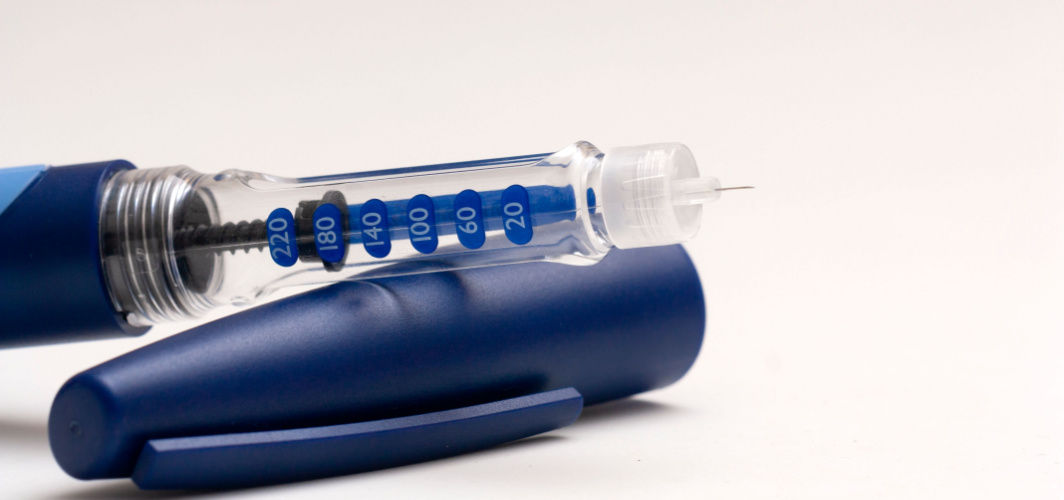Diabetes Management
How to Check Sugar Levels After a Meal?
2 min read

Managing blood sugar levels is an important aspect of diabetes care, and monitoring your sugar levels after meals can provide valuable insights into how different foods and portions affect your body. Here's a comprehensive guide on how to check sugar levels after a meal to help you maintain better control of your diabetes.
1. Use a Glucometer
The primary tool for checking post-meal sugar levels is a glucometer, a small and portable device that measures blood glucose levels. Before you start, ensure that the pricking area is clean and the device is properly calibrated according to the manufacturer's instructions.
2. Timing Matters
To get an accurate reading, it's essential to check your sugar levels at the right time. Typically, it's recommended to test 1 to 2 hours after your meal. This timing allows you to see how your body processes the carbohydrates from your meal.
3. Hand Hygiene
Before testing, wash your hands thoroughly with soap and water. Residues from food or other substances on your fingers can contaminate the test strip, leading to inaccurate results.
4. Prepare the Lancet Device
Most glucometers use a lancet device to prick your fingertip for a blood sample. Follow the instructions provided with your device to prepare and use the lancet.
5. Obtain a Blood Sample
Place a test strip into the glucometer and use the lancet device to prick the side of your fingertip. Gently squeeze your fingertip to collect a small drop of blood and apply it to the test strip.
6. Wait for the Reading
The glucometer will analyse the blood sample and provide a numerical reading of your sugar level on its display screen.
7. Record Your Results
Make it a habit to keep a record of your post-meal sugar levels. This tracking helps you and your healthcare provider identify patterns and make necessary adjustments to your diabetes management plan.
8. Interpret the Results:
Understanding your post-meal sugar levels is crucial. In general, the normal post-meal blood sugar level for individuals with diabetes is under 180 mg/dL.
9. Take Action:
Based on your post-meal sugar levels, you and your healthcare provider can decide if any changes are needed in your diet, medication, or exercise routine.
10. Seek Guidance:
Always consult with a diabetologist for guidance on monitoring and interpreting your post-meal sugar levels. They can provide personalised advice and help you create a comprehensive diabetes management plan.
Conclusion
Checking sugar levels after a meal empowers individuals with diabetes to make informed decisions about their dietary choices and medication. It's a valuable tool for achieving better blood sugar control and ultimately improving overall health and well-being.
Diabetes Management
Consult Top Diabetologists
View AllLeave Comment
Recommended for you

Diabetes Management
What are the Factors that Influence Insulin Action?
Insulin action refers to the ability of insulin to regulate blood sugar levels and various metabolic processes in the body. Insulin action is influenced by factors like, your weight, physical activity, diet, hormones, medications, stress, sleep, age and genetics. Insulin sensitivity varies among individuals and can be affected by lifestyle and genetic predispositions. Maintaining a healthy lifestyle through diet, exercise, and stress management is essential for optimal insulin action and metabolic health.

Diabetes Management
Top 5 Questions to Ask Diabetologists or Endocrinologists
When consulting your diabetologist or endocrinologist, asking the right questions is crucial for effective diabetes management. The top five questions to consider include inquiring about your current blood sugar control, understanding your target blood sugar levels, reviewing your medications and treatment plan, seeking advice on improving your diabetes management and learning about warning signs of diabetes complications. Additionally, it's beneficial to ask for resources for diabetes education and support. Effective communication with your healthcare professional is essential for effective diabetes care and a healthier life.

Diabetes Management
Does Diabetes Increase the Risk of Heart Disease in Younger Women?
A study found that women with diabetes, regardless of age, had the highest adjusted hazard ratio (aHR) for coronary heart disease (CHD). Women under 55 years had a 10.71 aHR for CHD, while those over 75 years had a 3.47 aHR. Younger women showed more risk factors for CHD, including metabolic syndrome, hypertension, obesity, smoking, and high lipoprotein insulin resistance (LPIR) and LDL cholesterol levels. The study concluded that women under 55 years with type 2 diabetes face a tenfold higher risk of developing heart disease within two decades.
Subscribe
Sign up for our free Health Library Daily Newsletter
Get doctor-approved health tips, news, and more.
Visual Stories

8 Fruits That are Incredibly Healthy for Diabetes
Tap to continue exploring
Recommended for you

Diabetes Management
What are the Factors that Influence Insulin Action?
Insulin action refers to the ability of insulin to regulate blood sugar levels and various metabolic processes in the body. Insulin action is influenced by factors like, your weight, physical activity, diet, hormones, medications, stress, sleep, age and genetics. Insulin sensitivity varies among individuals and can be affected by lifestyle and genetic predispositions. Maintaining a healthy lifestyle through diet, exercise, and stress management is essential for optimal insulin action and metabolic health.

Diabetes Management
Top 5 Questions to Ask Diabetologists or Endocrinologists
When consulting your diabetologist or endocrinologist, asking the right questions is crucial for effective diabetes management. The top five questions to consider include inquiring about your current blood sugar control, understanding your target blood sugar levels, reviewing your medications and treatment plan, seeking advice on improving your diabetes management and learning about warning signs of diabetes complications. Additionally, it's beneficial to ask for resources for diabetes education and support. Effective communication with your healthcare professional is essential for effective diabetes care and a healthier life.

Diabetes Management
Does Diabetes Increase the Risk of Heart Disease in Younger Women?
A study found that women with diabetes, regardless of age, had the highest adjusted hazard ratio (aHR) for coronary heart disease (CHD). Women under 55 years had a 10.71 aHR for CHD, while those over 75 years had a 3.47 aHR. Younger women showed more risk factors for CHD, including metabolic syndrome, hypertension, obesity, smoking, and high lipoprotein insulin resistance (LPIR) and LDL cholesterol levels. The study concluded that women under 55 years with type 2 diabetes face a tenfold higher risk of developing heart disease within two decades.

